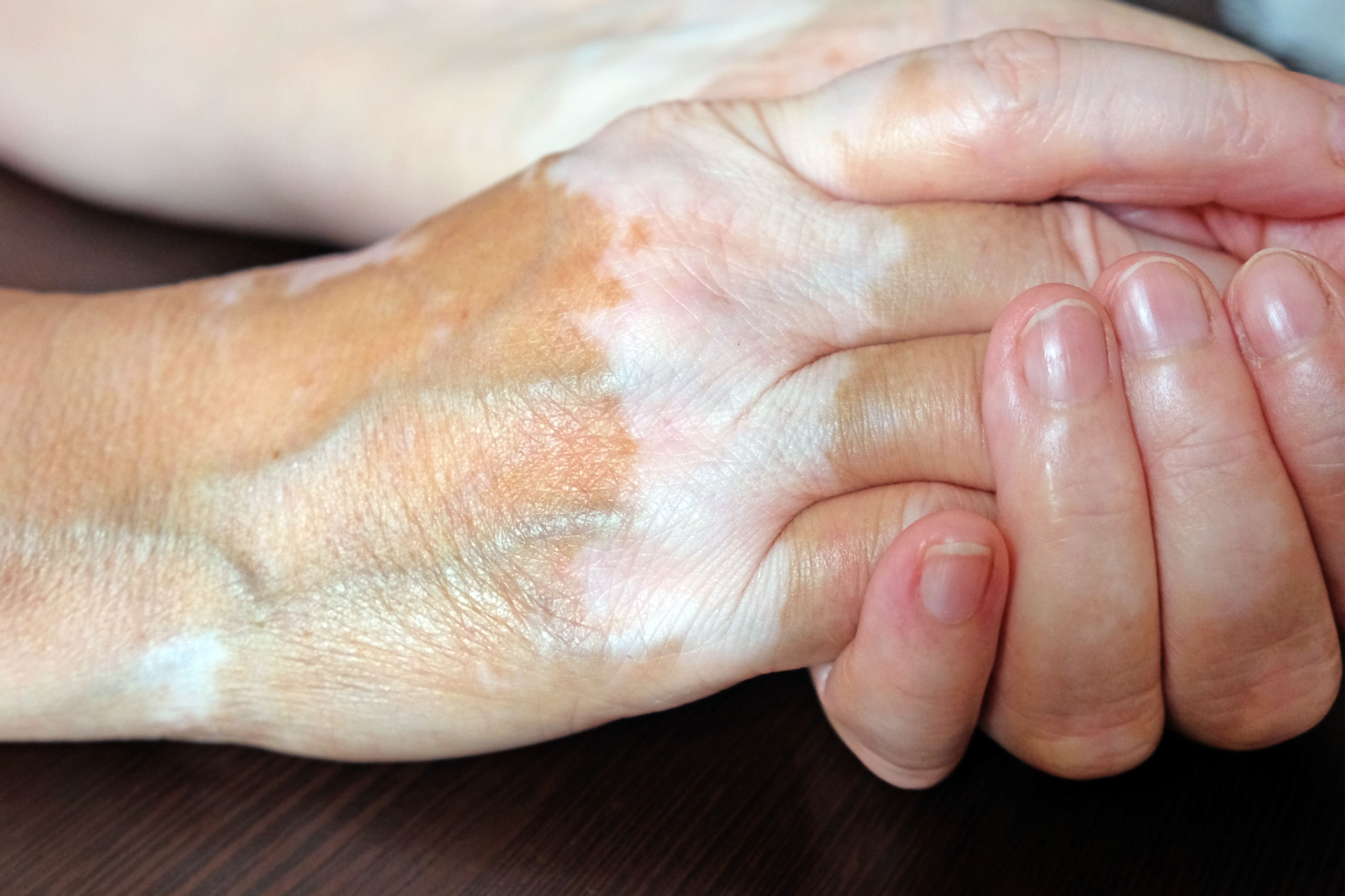- Acne
- Actinic Keratosis
- Aesthetics
- Alopecia
- Atopic Dermatitis
- Buy-and-Bill
- COVID-19
- Case-Based Roundtable
- Chronic Hand Eczema
- Chronic Spontaneous Urticaria
- Drug Watch
- Eczema
- General Dermatology
- Hidradenitis Suppurativa
- Melasma
- NP and PA
- Pediatric Dermatology
- Pigmentary Disorders
- Practice Management
- Precision Medicine and Biologics
- Prurigo Nodularis
- Psoriasis
- Psoriatic Arthritis
- Rare Disease
- Rosacea
- Skin Cancer
- Vitiligo
- Wound Care
Article
Reduced Incidence of Melanoma, Non-Melanoma Skin Cancers In Vitiligo
Author(s):
Investigators compared data among patients with vitiligo and the general population.
Patients with vitiligo were found to have a reduced incidence of melanoma and non-melanoma skin cancers in a UK-based study.1
Tetiana/AdobeStock

Researchers sought to determine the incidence of skin cancers among patients with the condition, citing conflicting epidemiological evidence describing an inverse relationship between skin cancer and vitiligo. Furthermore, they sought to explore heterogeneity. Particularly, they noted a lack of population-based evidence representative of European countries.
They used UK electronic primary care records from 2010 to 2022 to identify adult patients with vitiligo. 15,156 adults were identified and matched to relevant population controls (n=60,615) including age, sex, ethnicity, race, clinical characteristics, and comorbidities.
This led to an identification of 25,439 matched controls wherein a type of skin cancer was identified and 6,360 incident cases of vitiligo. Of the population of patients with incident cases of vitiligo, the prevalence of skin cancers was 1.04%. This number was lower than the prevalence in the matched controls: 1.15%.
Over the course of 10 years, the cumulative incidence of skin cancer among patients with vitiligo (n=1.3%) was lower than the incidence among the matched control group (n=2.0%).
Additionally, this incidence was lower in cases of vitiligo than in controls across several types of skin cancers:
- Basal cell carcinoma (BCC): 0.7% incidence in vitiligo; 1.1% incidence in controls
- Melanoma: 0.1% incidence in vitiligo; 0.4% incidence in controls
- Squamous cell carcinoma (SCC): 0.5% incidence in vitiligo; 0.7% incidence in controls
- AND: 2.6% incidence of actinic keratoses (AK) in vitiligo with 2.7% incidence in controls
This incidence was also lower in patients of non-white ethnicities by 1%, with a 1.3% incidence in white patients and a 0.3% incidence in non-white patients. Despite this, vitiligo was also associated with a reduction in skin cancer incidence among white patients.
Researchers noted that while there is no association between vitiligo and AK, the risk of BCC, melanoma, and SCC was consistently reduced.
“Vitiligo was associated with a 38% lower risk of the primary composite skin cancer outcome,” study authors wrote.
According to researchers, one potential study limitation was the higher likelihood of patients with vitiligo visiting primary care physicians than members of the general population. Another was an inability to evaluate skin cancer risk in population subgroups due to insufficient event numbers. It was also possible, according to researchers, that the study failed to capture exposure of vitiligo.
“To our knowledge, our study represents the largest evaluation to-date of vitiligo-associated skin cancer risk in a European population,” study authors wrote. “Although it is possible that lower rates of skin cancer could in part be due to sun avoidance behavior in people with vitiligo, our findings are also consistent with the evidence from genetic studies showing a protective effect of vitiligo against skin cancer risk...Given concerns that some treatments for vitiligo, such as prolonged phototherapy, may increase skin cancer risk, the demonstrated reduction in skin cancer incidence should be reassuring to both people with vitiligo and clinicians managing the condition.”
Reference
- Ferguson J, Eleftheriadou V, Nesnas J. Risk of melanoma and non-melanoma skin cancer in people with vitiligo: UK population-based cohort study. [published online ahead of print, 2023 May 3]. J Invest Dermatol. 2023;S0022-202X(23)02047-X. doi:10.1016/j.jid.2023.04.013
Newsletter
Like what you’re reading? Subscribe to Dermatology Times for weekly updates on therapies, innovations, and real-world practice tips.
















